Project

Since 2020 the Living Summer School offers to diverse students of all around Europe the possibility to take part on an informal learning experience focus on various aspects of territorial innovation. Each years this Summer School propose to gather around a specific thematic of urban planning and design, questioning the actual emergency of reinvents our way of thinking , building and living with our environnement. For the first edition, professionals and students focus on waterscapes, for the second one, they work on social space. For this third year, we gather around new way of building, less consuming of space and raw materials.
To encourage the cross of knowledge and enrich the reflexions, the Living Summer School created a constellation of partenaire from Kortrijk, to all Europe ! In that contexte, and because we believe in the same way of learning, building and living together, Constructlab was invited to participate with also FabLab Torino on the third edition. We were host in Kortrijk not only by the Summer School but also by their local partners with witch we work : Bolwerk, Heerlijkheid van Heule, LZSB from wildebras. Each of this associations host a groupe of participants and work with them on making shifts, each one with their own problematics.

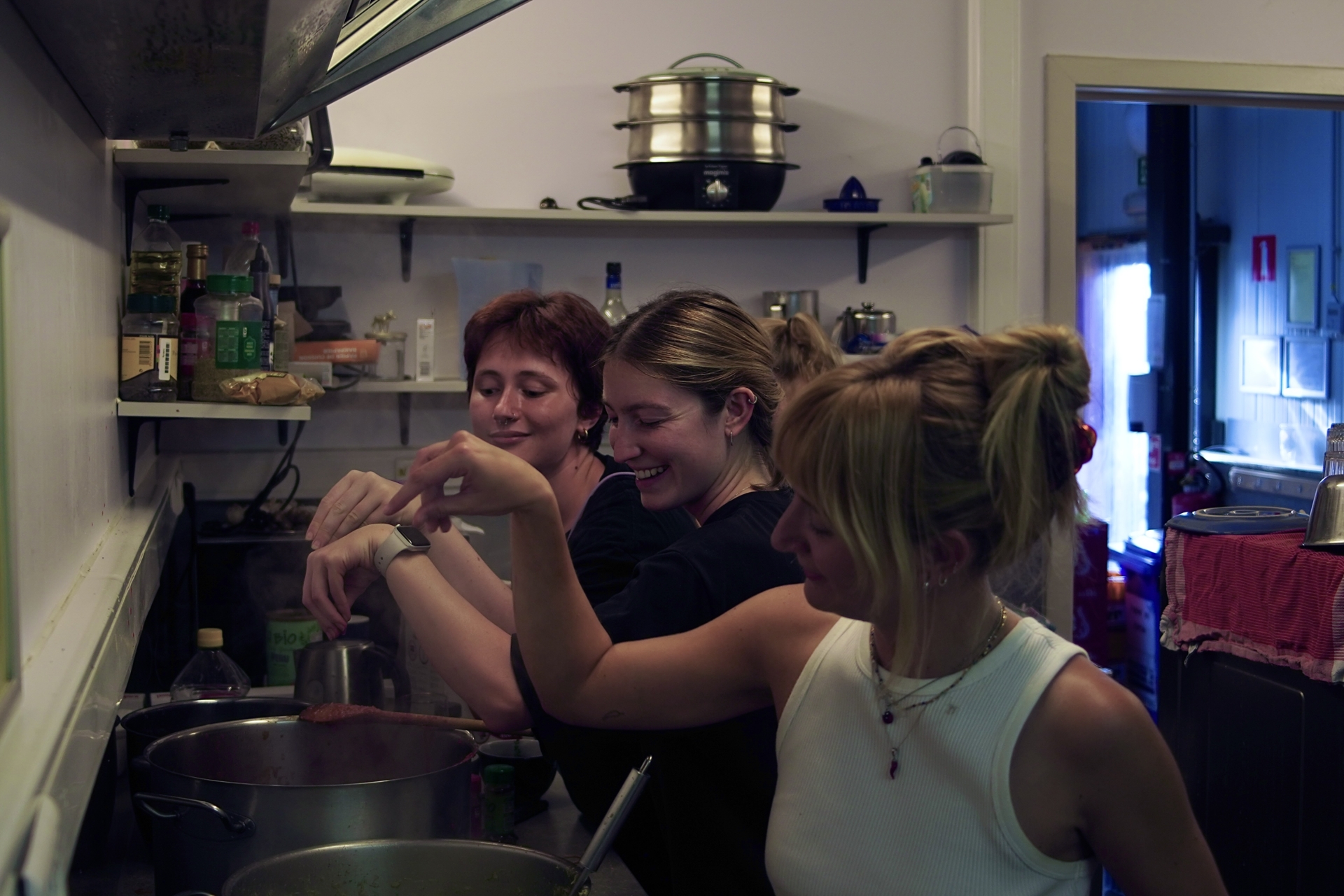


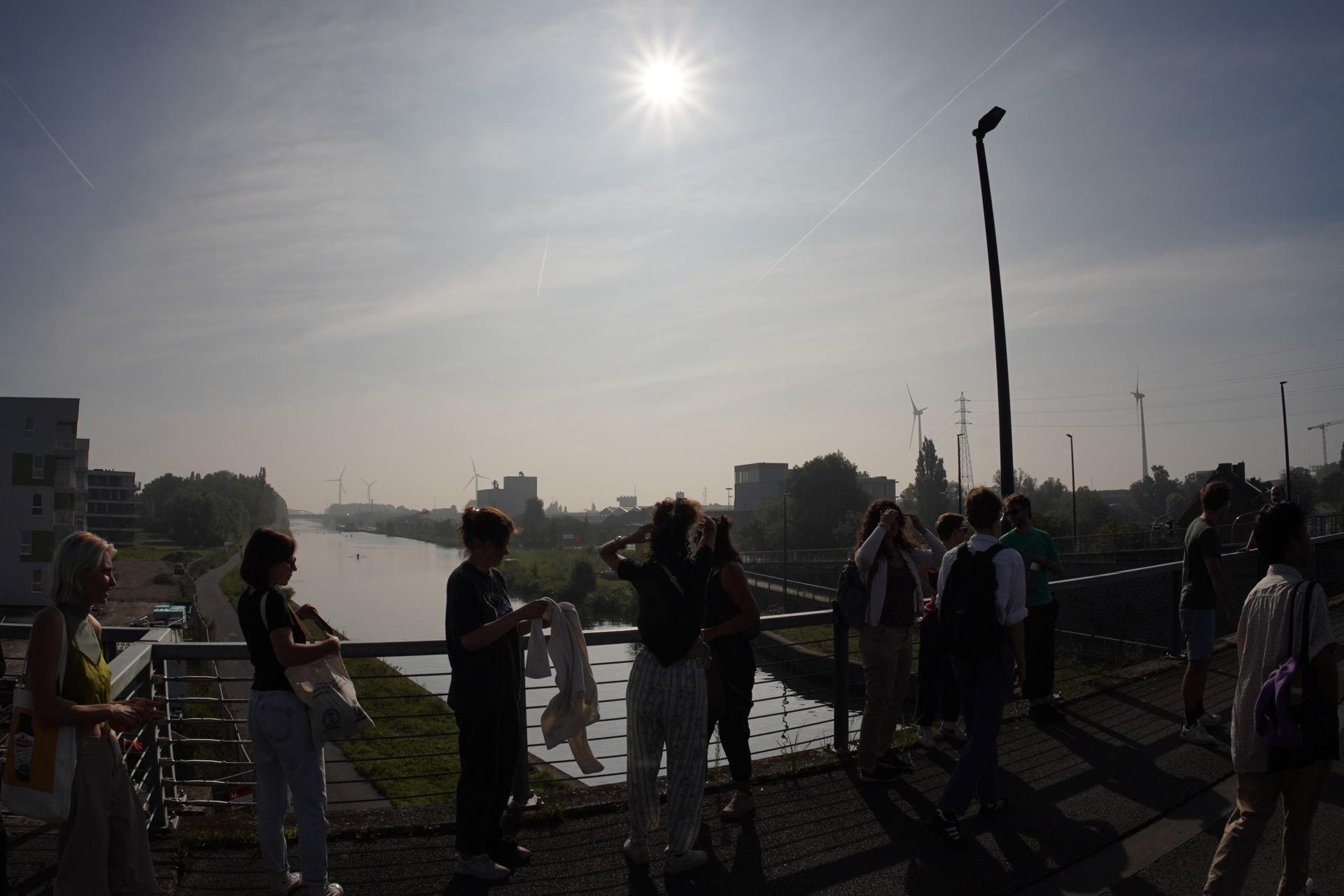
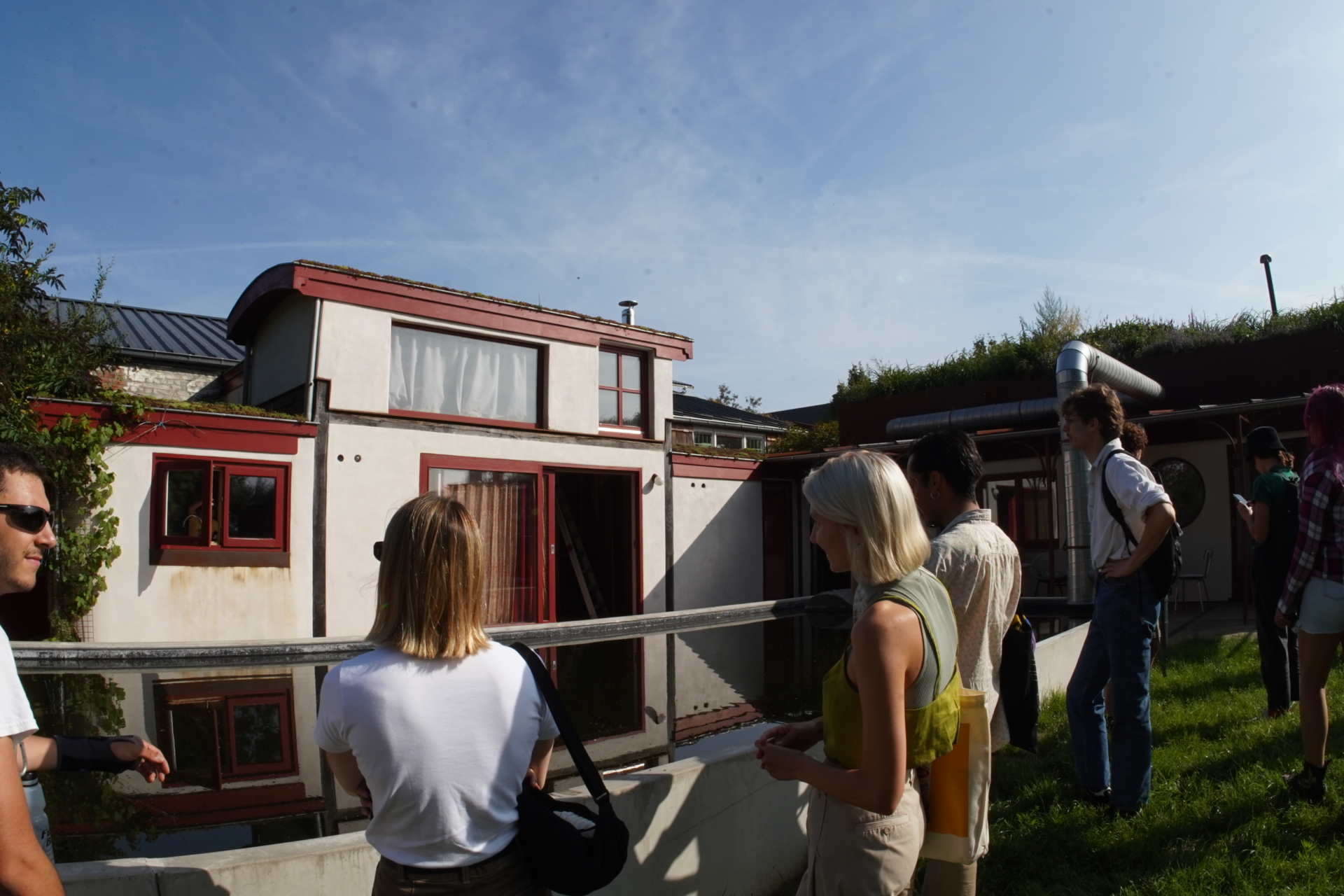
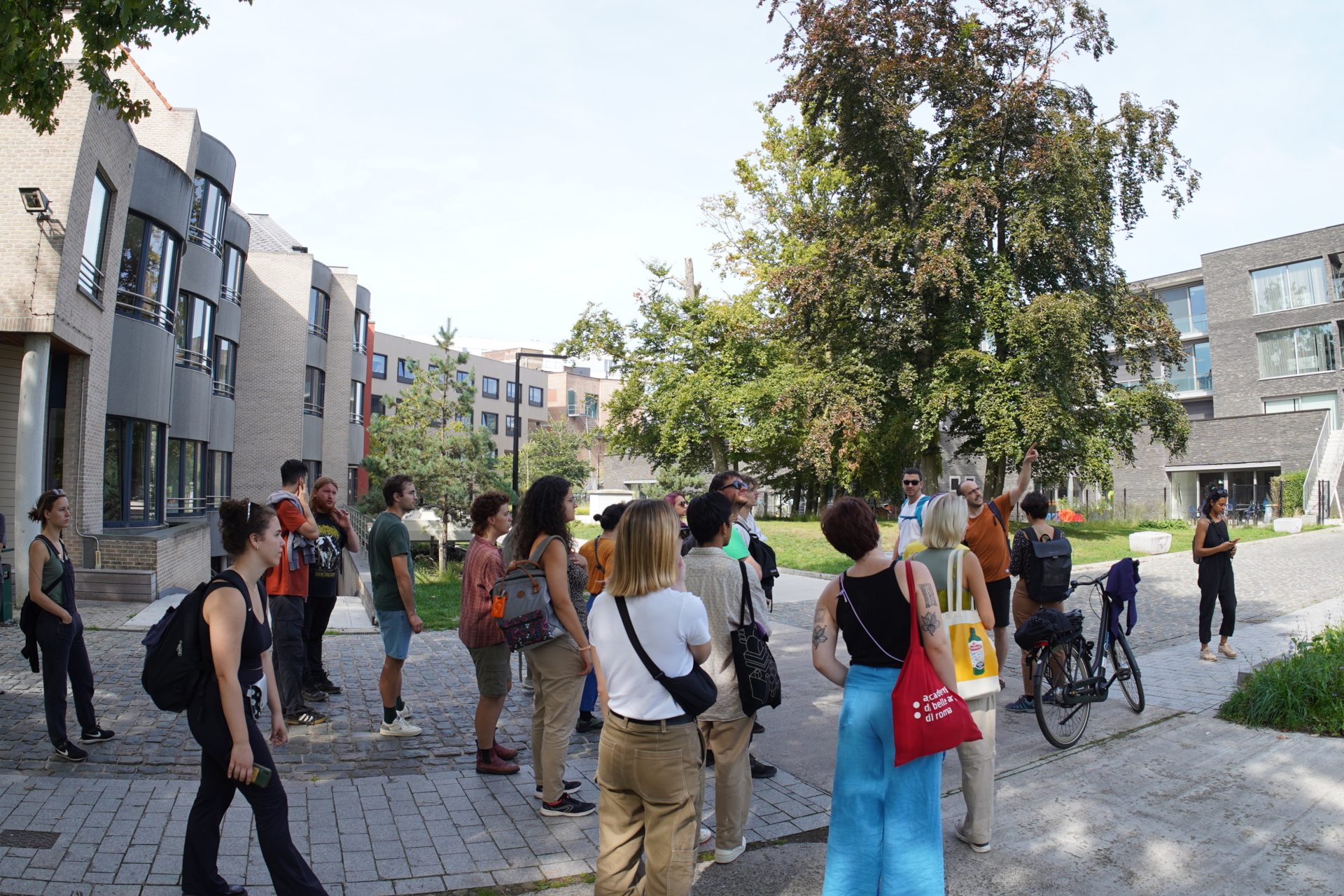

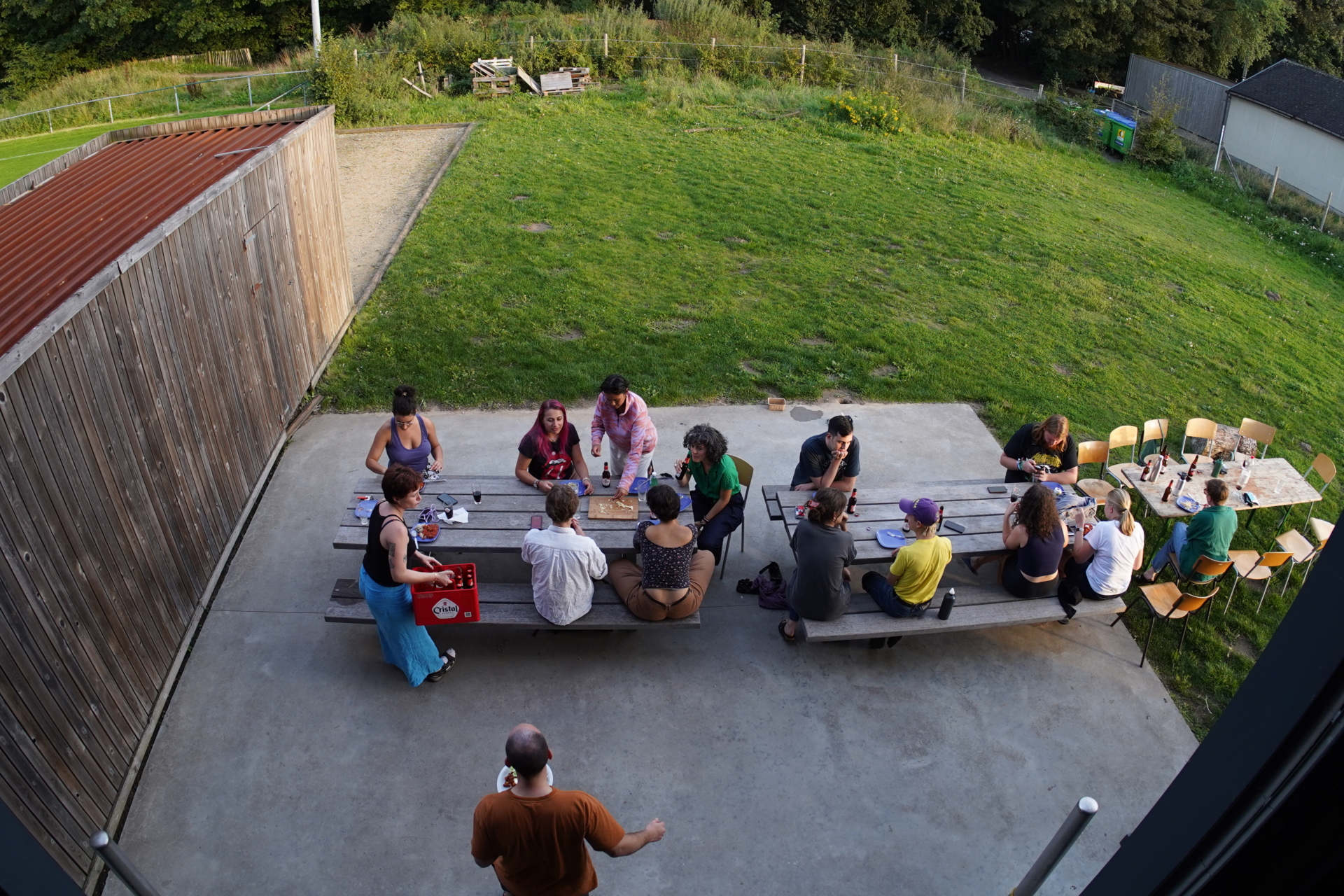
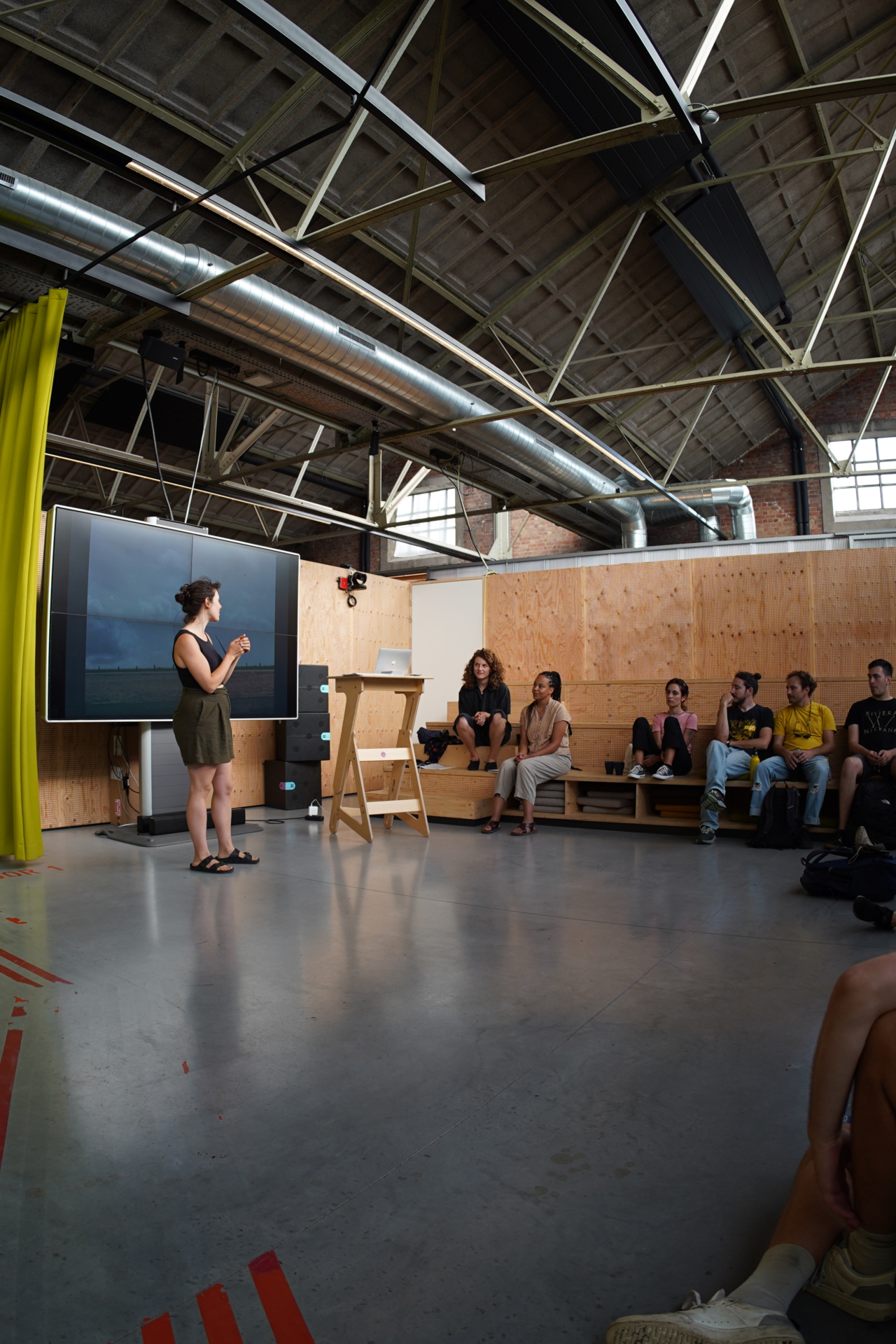

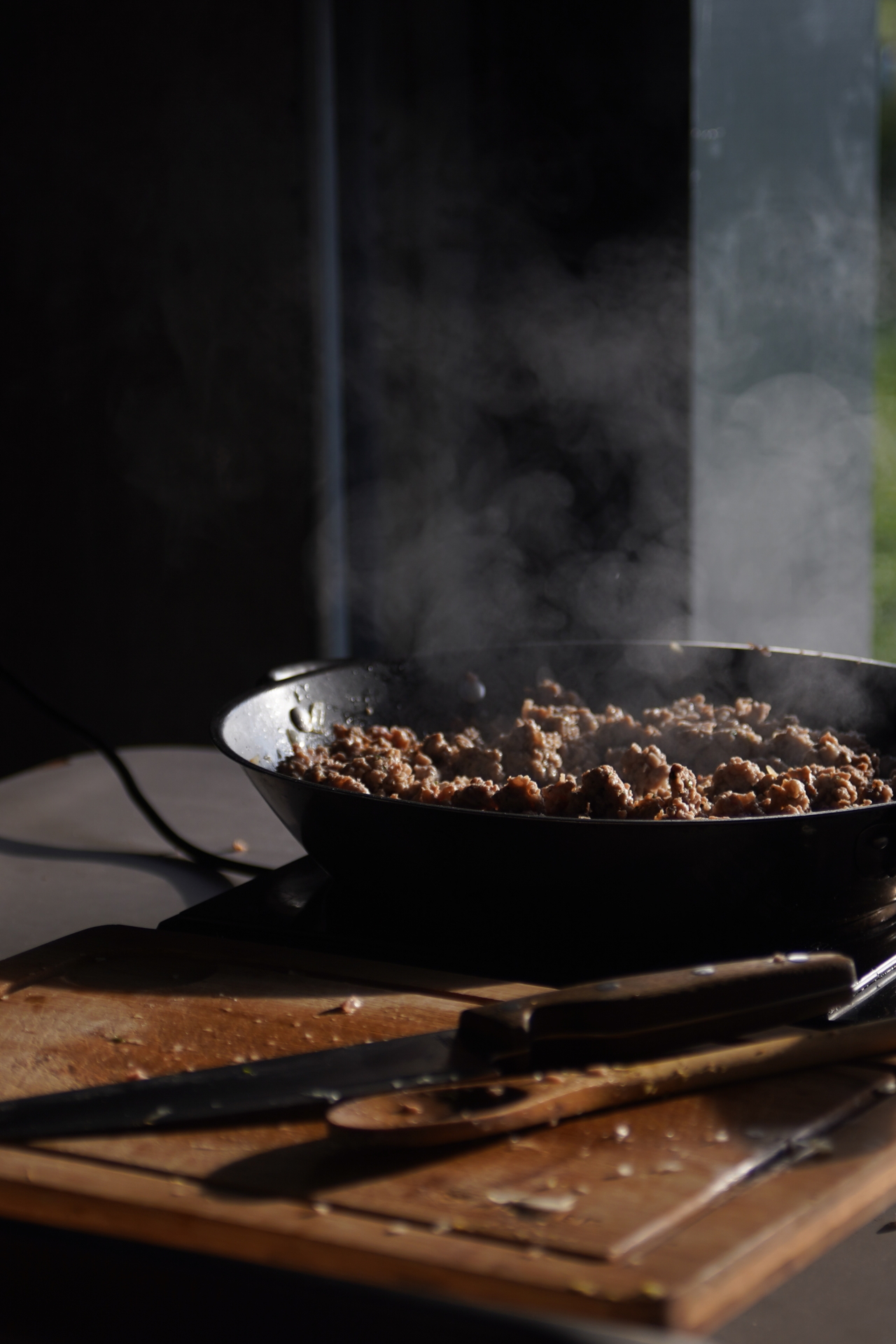
LZSB is an association who promote wild playground in cities. In Kortrijk, they create a series of experiments turning a wild island on a adventure playground where kids can freely explore and build with minimal supervision. Through peer learning, they also learn to use tools and build their own plays.
However, the playground’s biodiversity is declining despite the children’s care. To address this, Wildebras collaborate with Living Summer School participants to co-design interventions that balance wild play with rewilding. How can we increase the biodiversity without decrease the potentiality of play ? What kind of intervention can we design to protect the nature and offer more wild-play space ?
Starting the week by building a wall to separate the island in to parts, a space for kids, a space for nature, we get directly into the experimentation. It was also a way to invite participants to think by doing and over all think by playing !!! That why grilled-mashmalow breaks were so importants, to understand the site and the way children used it. Discovering the philosophy of the island we ask our self : How can we act like children ? So after building our tool (the wall) we start playing with it, destroying some part, putting some other in vertically, or of the floor. Playing like this with our new tool, moving our panels around the island, like children could do to build their hut, we also damaged some part of the nature. So, how can we build/play without destroying the biodiversity ? Should we found an other way to build/play ? Should we give some time to each part of the island to regenerate ? Now the island is symbolically cut in two, what will happen next it not on our hands anymore. How children will play with it ? How nature will invade it ? Let’s see what will happen until next year ! To be continue…
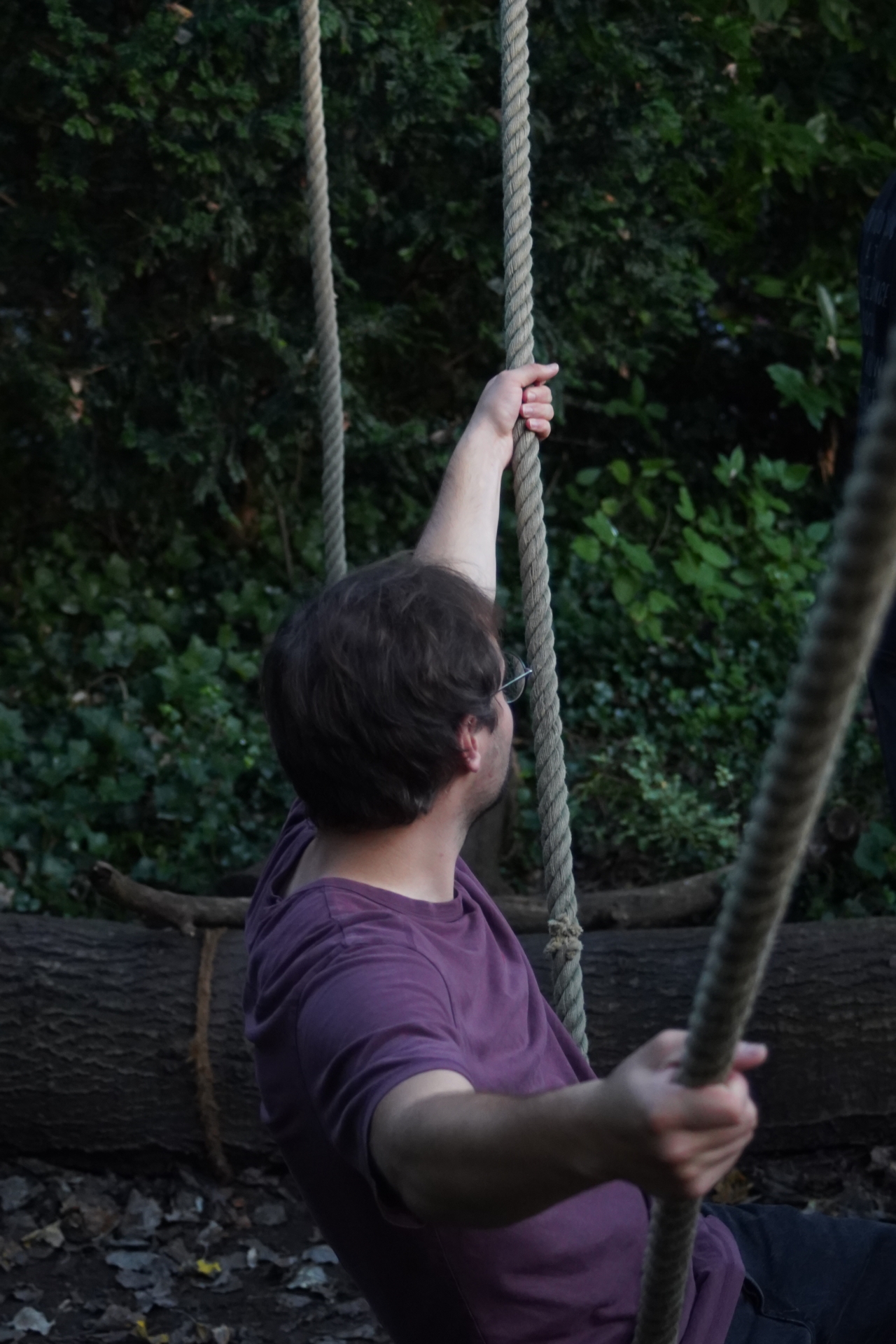
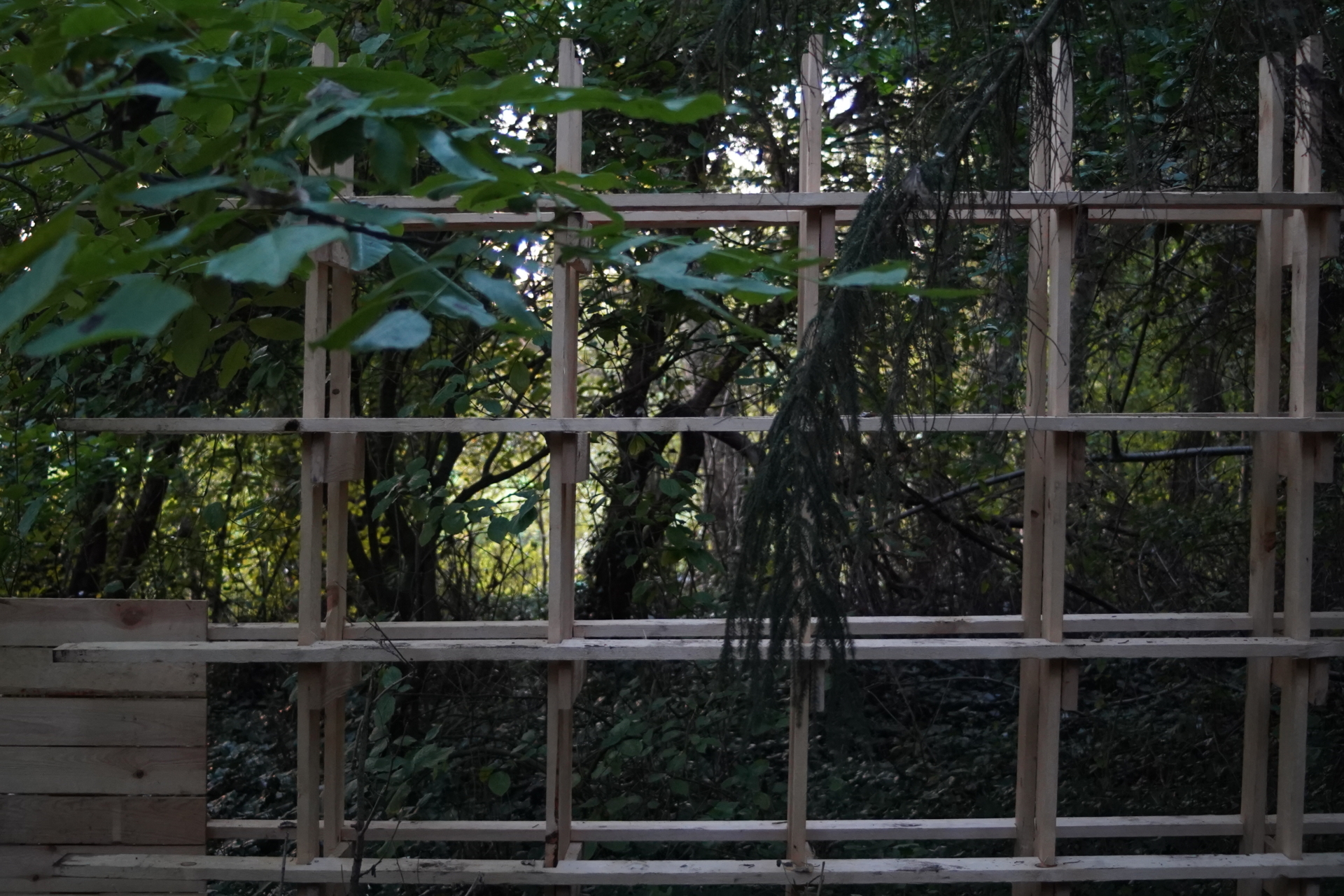

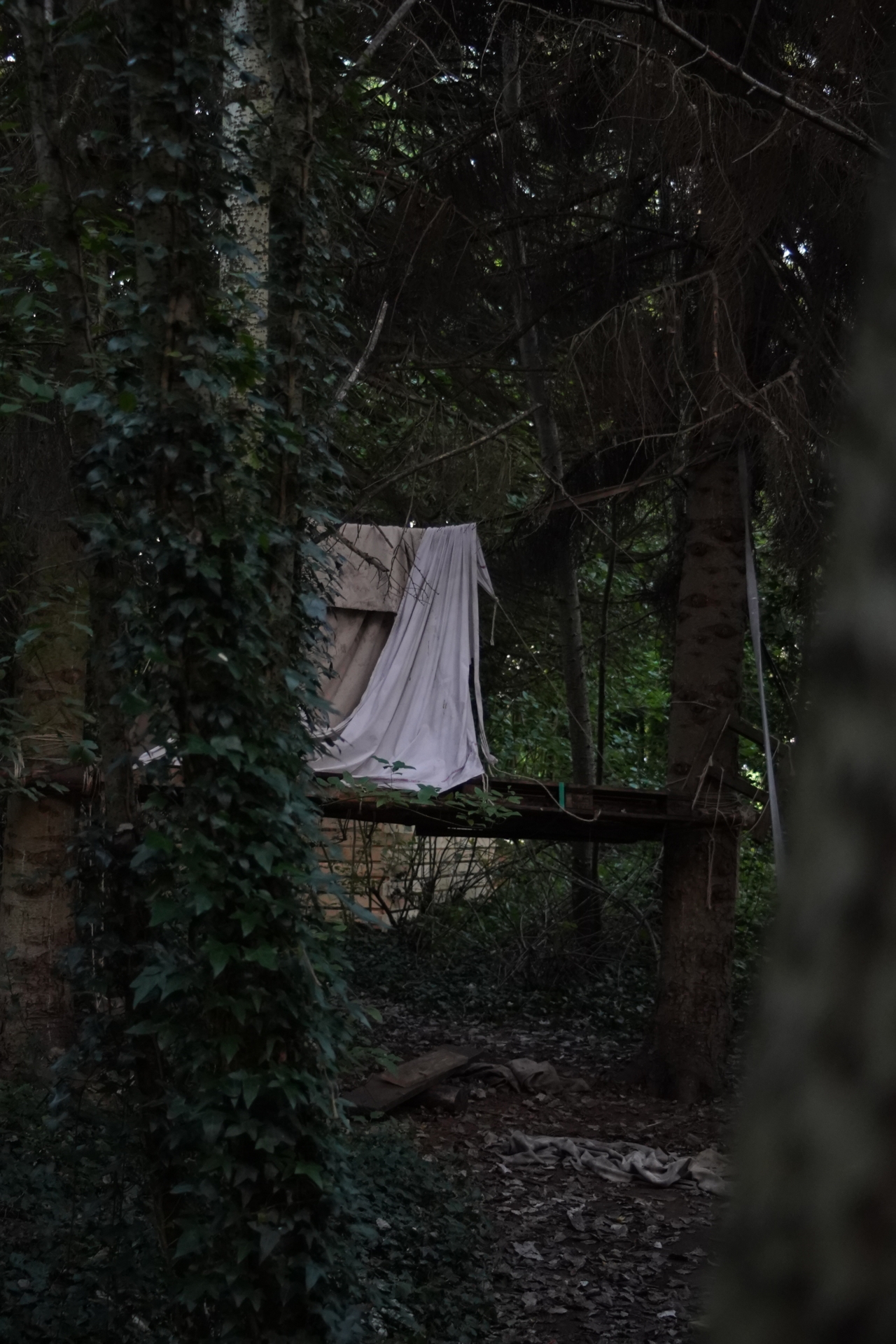




‘’It is not a toilet project’’
It takes a lot to design a toilet. Sanitary, technically and accessibility wise, it is never an easy task. Trying to fit an awkward shape of a toilet into public or living spaces is something that architects struggle with in university. Students spend hours to perfect their first restroom, juggle between required dimensions, efficiency, social conventions until their professor will release them from this struggle saying ‘’In the end it’s not a toilet project’’. Later the same students will learn to copy paste blocks of sanitary core into their next projects and toilets will become an annoying afterthought rather than a design decision.
But what if it is a toilet project?
1 trailer, 2 tanks of water, 2 sets of composting toilets, a pile of wood and 5 hot summer days. It’s all what we have been given to realize a sanitary and pedagogical unit at the Heerlijkheid Van Heule Farm. As it was a technically challenging design brief, we gathered in a team of mostly architects and product designers, with the same will of sharing knowledge and working together on the process. We were all on the same page to stay on a low tech production, and keep it as simple as possible, to be able to build a structure with the only two drills we could find at the farm.
Inclusivity was one the many aspects of our construction plan, but it quickly became the guiding one of our design process. First, regarding accessibility (for users who might be injured, elderly, very young, etc.).
”We need a ramp, let’s have a research team on normatives dimensions to ensure a comfortable path.”
Then, inclusivity for people regarding gender, so we decided to keep both toilet stalls non-gendered, with two different accessibility levels. We also needed an urinal to avoid as many liquids as possible to enter the composting toilets. Wait, urinals? This then started a debate which will lead to adding, or at least attempting to add, a unisex urinal to the project.
Welcomed as a challenge for the team, the unisex urinal brought to light the inherent methodology of everyone’s professional backgrounds.
The model is based on an existing system: the squatting toilet (called Turkish toilets in France, Greek toilets in Turkey, and so on.). When architects were looking -with no success- for cheap and second hand elements around Kortrijk, the product designers decided to make it themself and use the workshop at disposal in their university. We had the opportunity to learn more about thermoforming processes and machines. and realized how freely product designers can work on forms. All the technical constraints happened to open more opportunities in design.
We find ourselves enjoying the whole “start from scratch” process for the design of the urinal which allowed us to give feedback on our own designs and bring the project further.
As we wanted a low tech design for the overall structure, we had to follow the flow path of the water to not install water pumps. Clean water is stocked on the top tank, then gets used in the facilities through gravitational pressure, after it gets collected in the bottom tank to be stored before using it for fertilizer. In order to work, we had to rearrange the height levels of all the actions happening on the toilet trailer: squatting to pee, standing to use the urinal , washing your hands standing or sitting on a wheelchair,… but all of that was meant to happen on top of the dirty water level… Let’s build a squatting tower then! But, how high could we go to be able to leave the farm with the truck through its entrance door ? And how could we save a maximum of wood and effort ? Because yes, it’s a toilet project but with limited resources (wood, people and time), we collectively re-focused again and again to make everything easy to build, easy to use.
In the construction process we discovered another nuance, as we come from different backgrounds in terms of education and experience: we do not share the same familiarity with the building process or some tools. With limited time and resources everybody at some point had to be involved in the construction, so there was no other way than to share our knowledge with each other. It happened that our group was not reflecting stereotypes about who usually has the “building skills”, and from this a very interesting conversation started. How gender and sexual identity play a role in having or not shame regarding not knowing how to drill or use sewing machines. What we personally find so valuable in this experience is providing a space for learning without judgment and fear, with no expectations or stereotypes attached to your identity.
And at the end, the trailer doesn’t have an urinal, but it could. It doesn’t have a waterproof roof either, it’s unfinished. It allows a lot of improvements, appropriation and it’s not ours anymore. Our time there ends around a “thank you” circle, as everyday at the farm. But this time, we were glad to receive homemade poop crochet plushies. It’s definitely a toilet project.
Text by Bernadetta Budzik & Ariane Caillaud
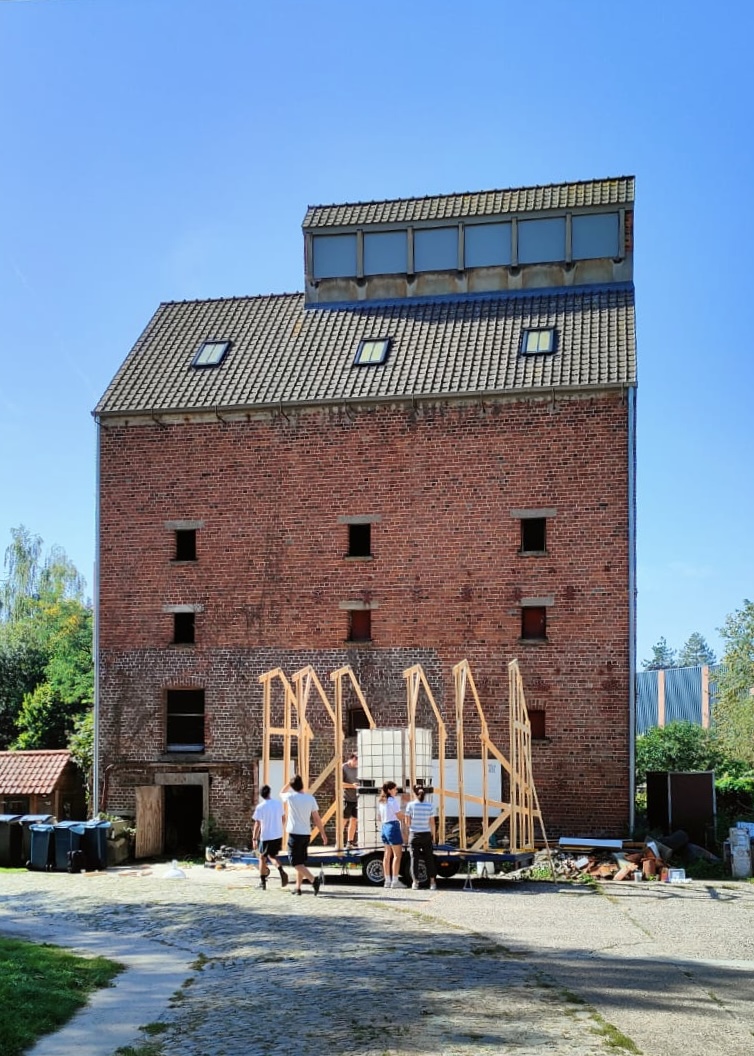
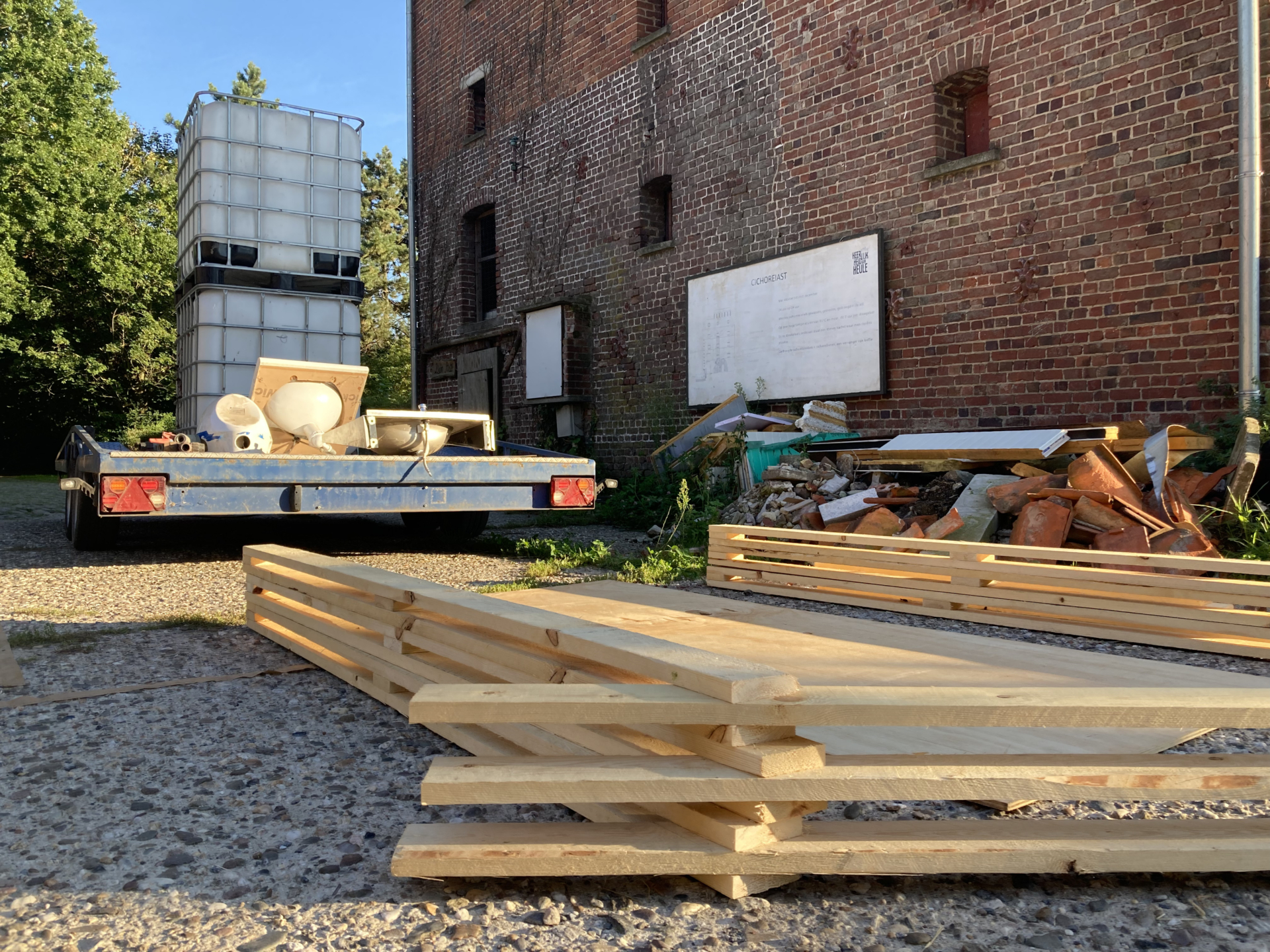



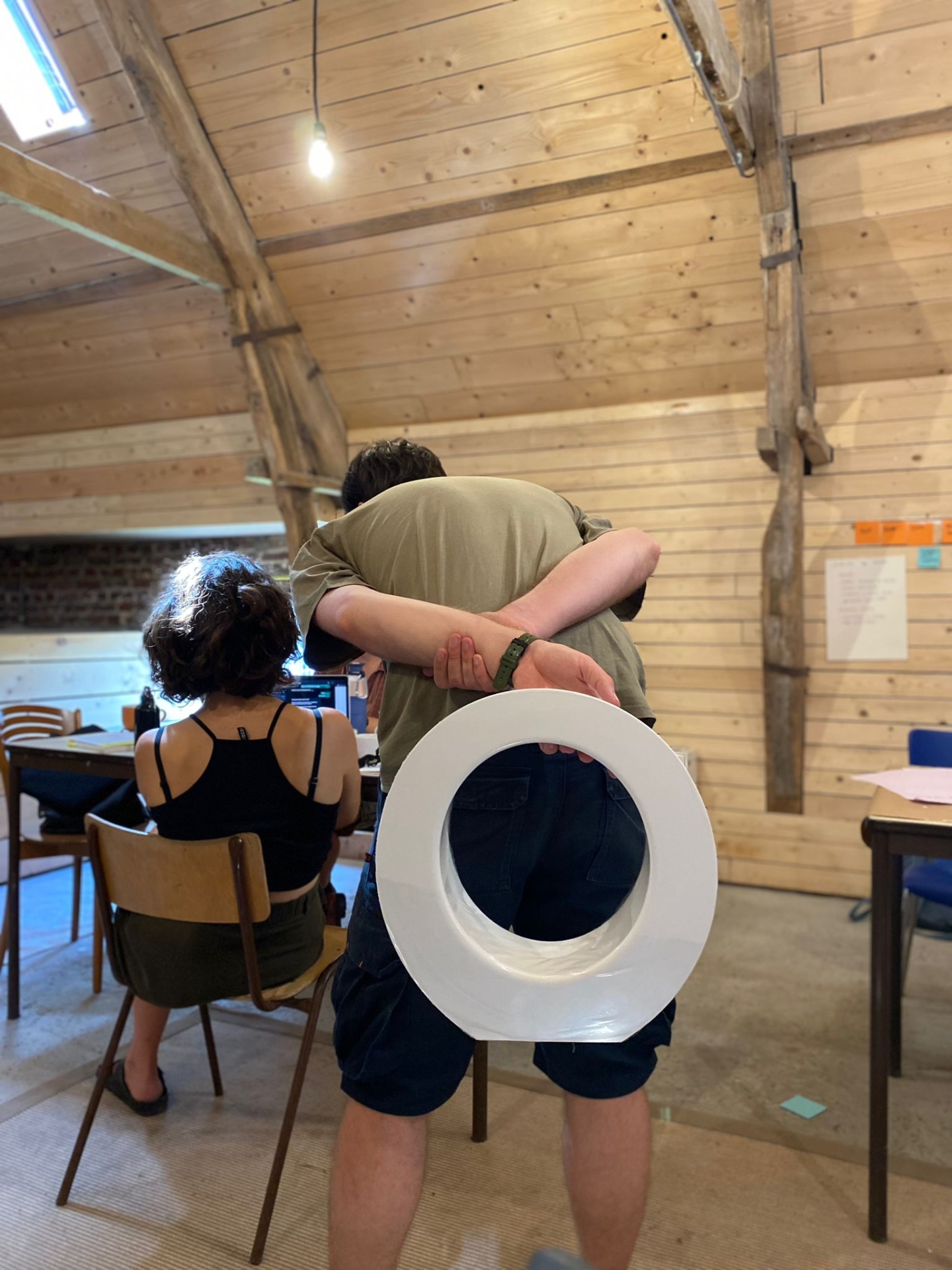
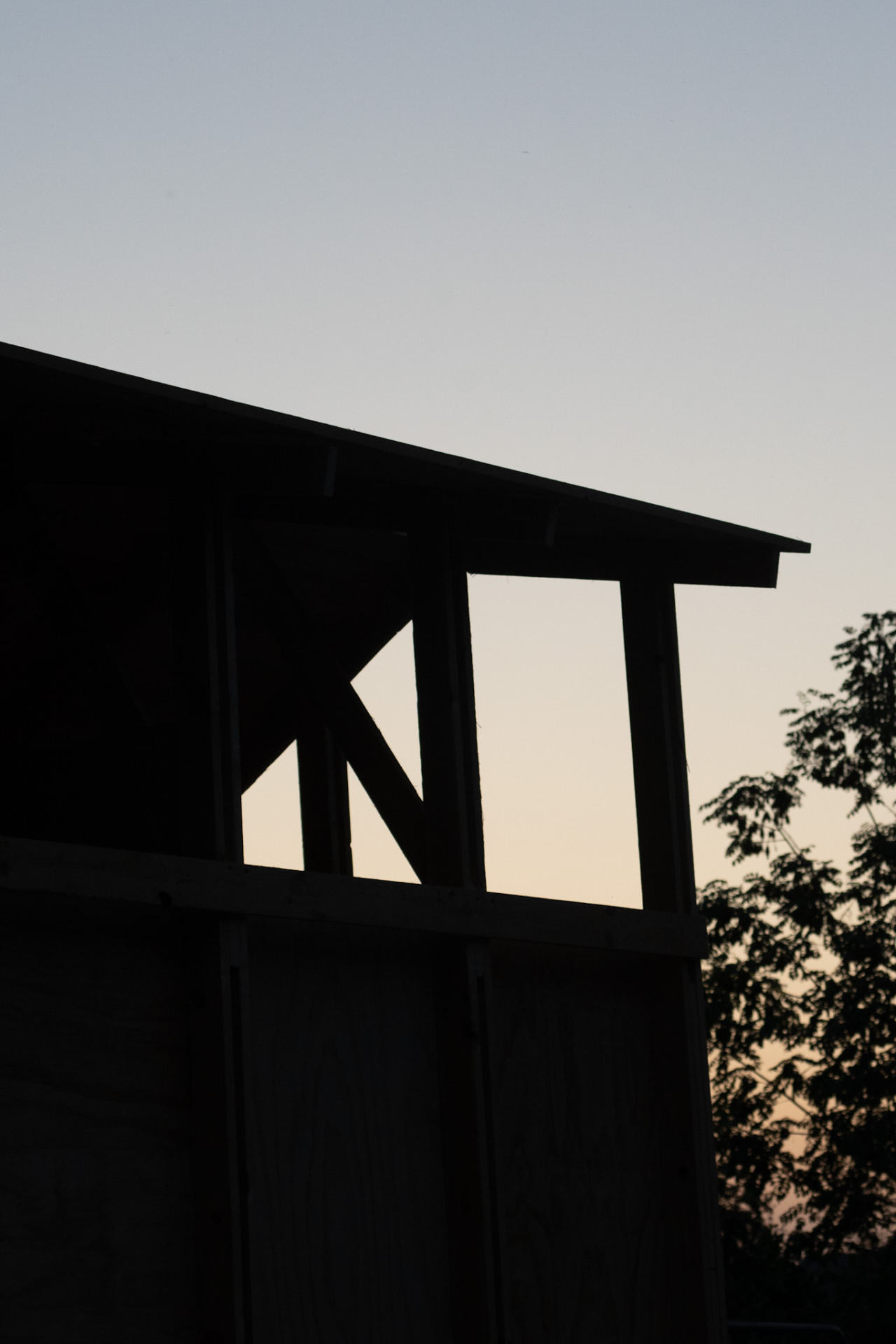


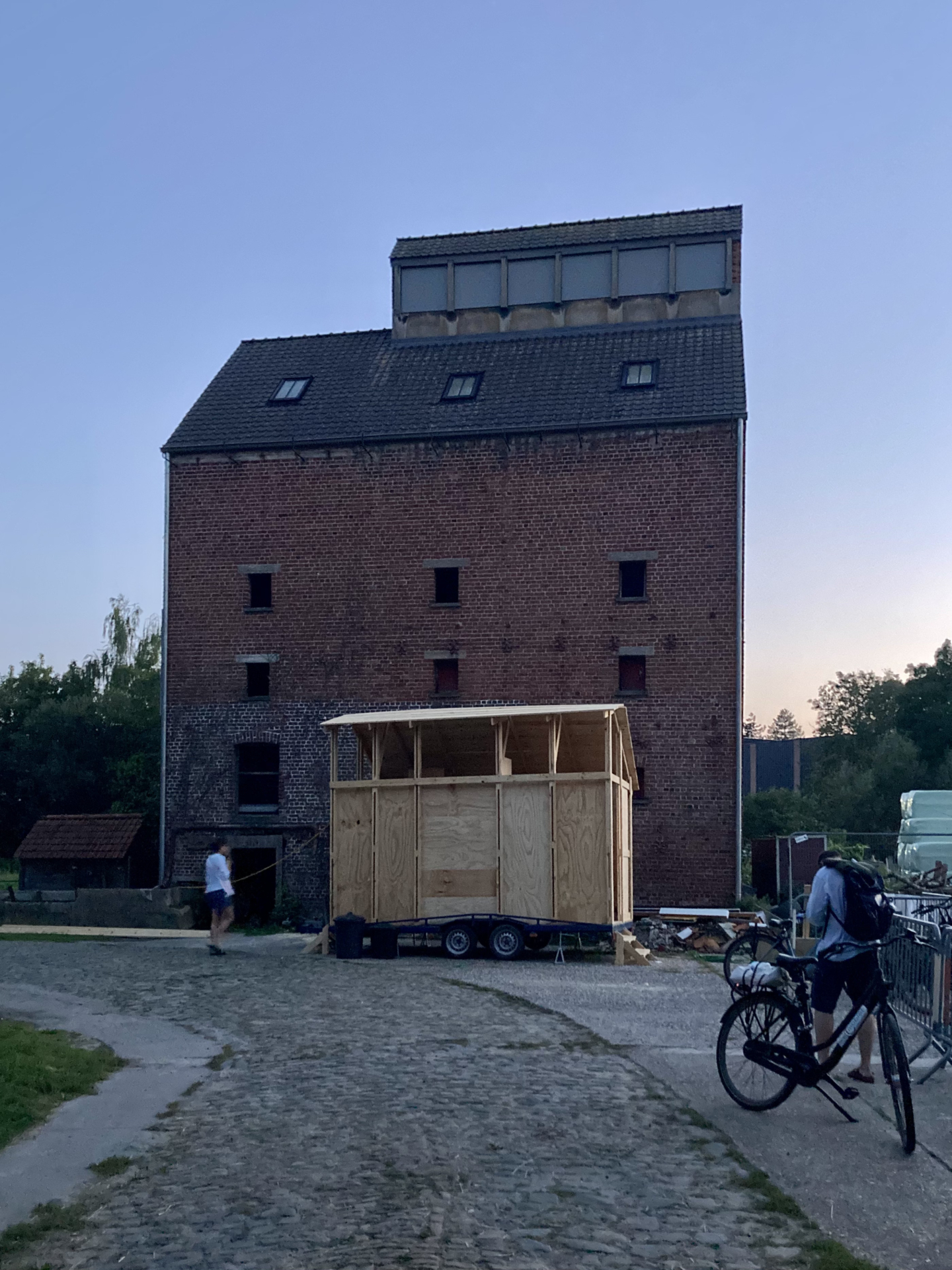

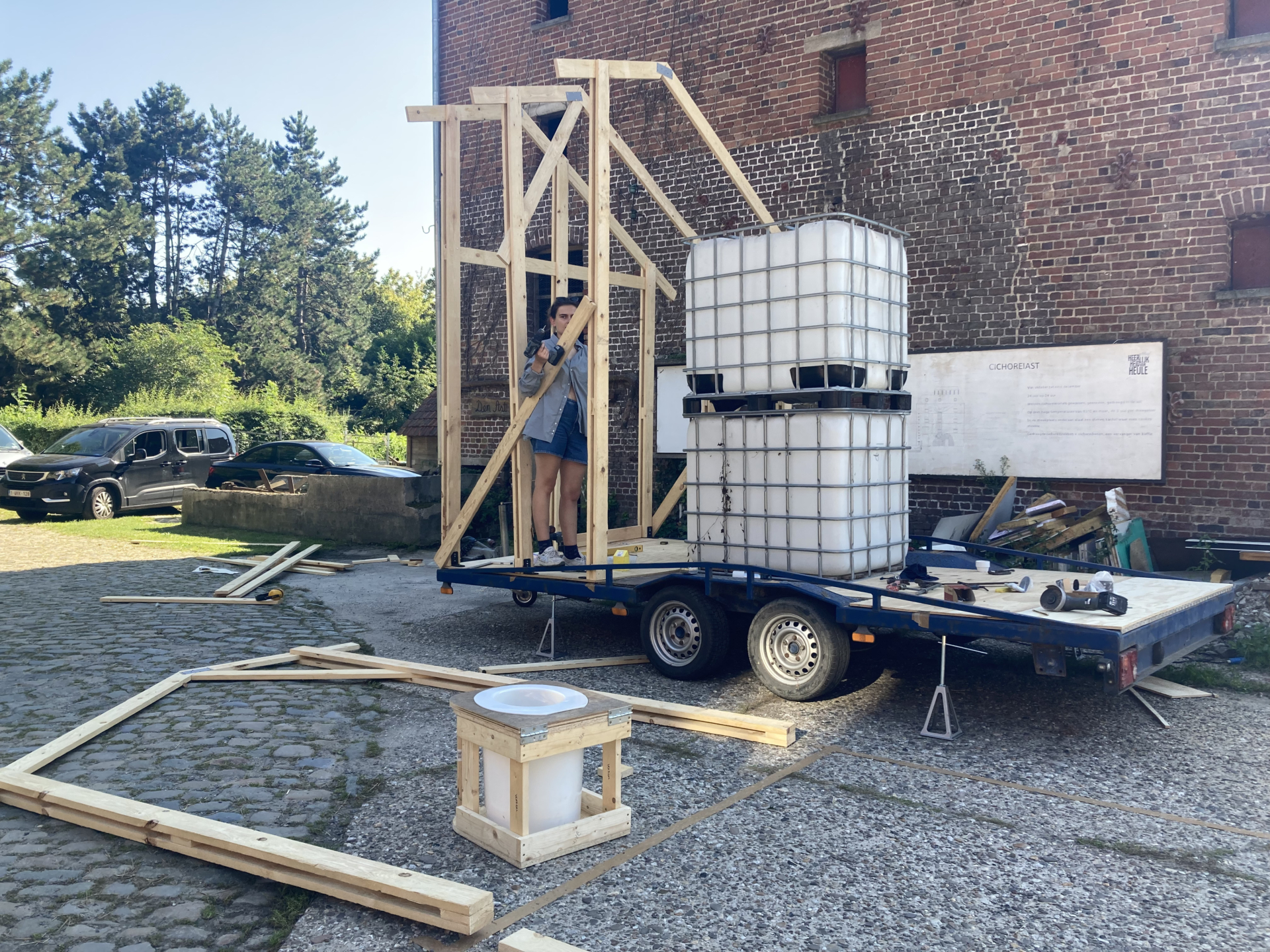
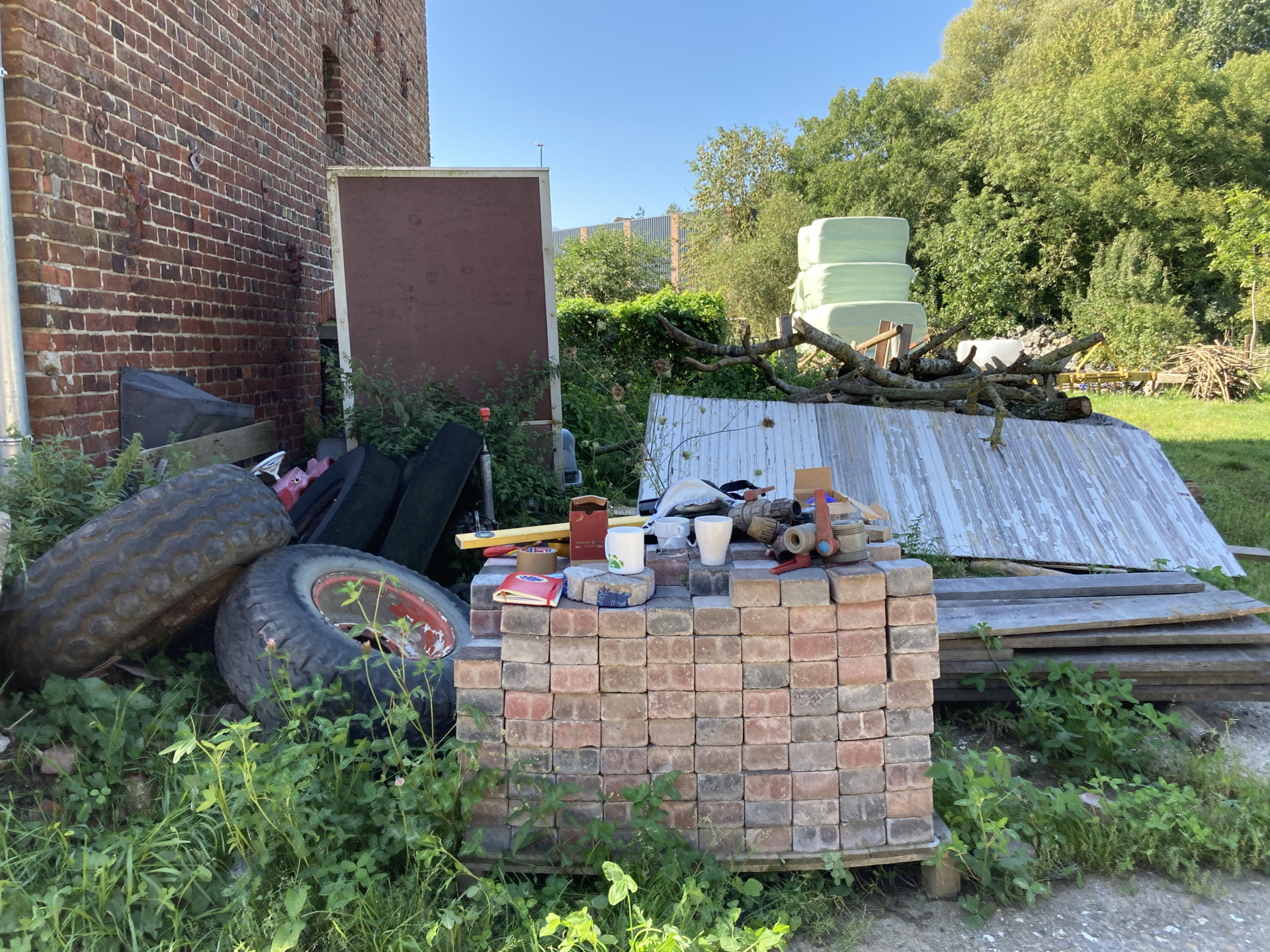
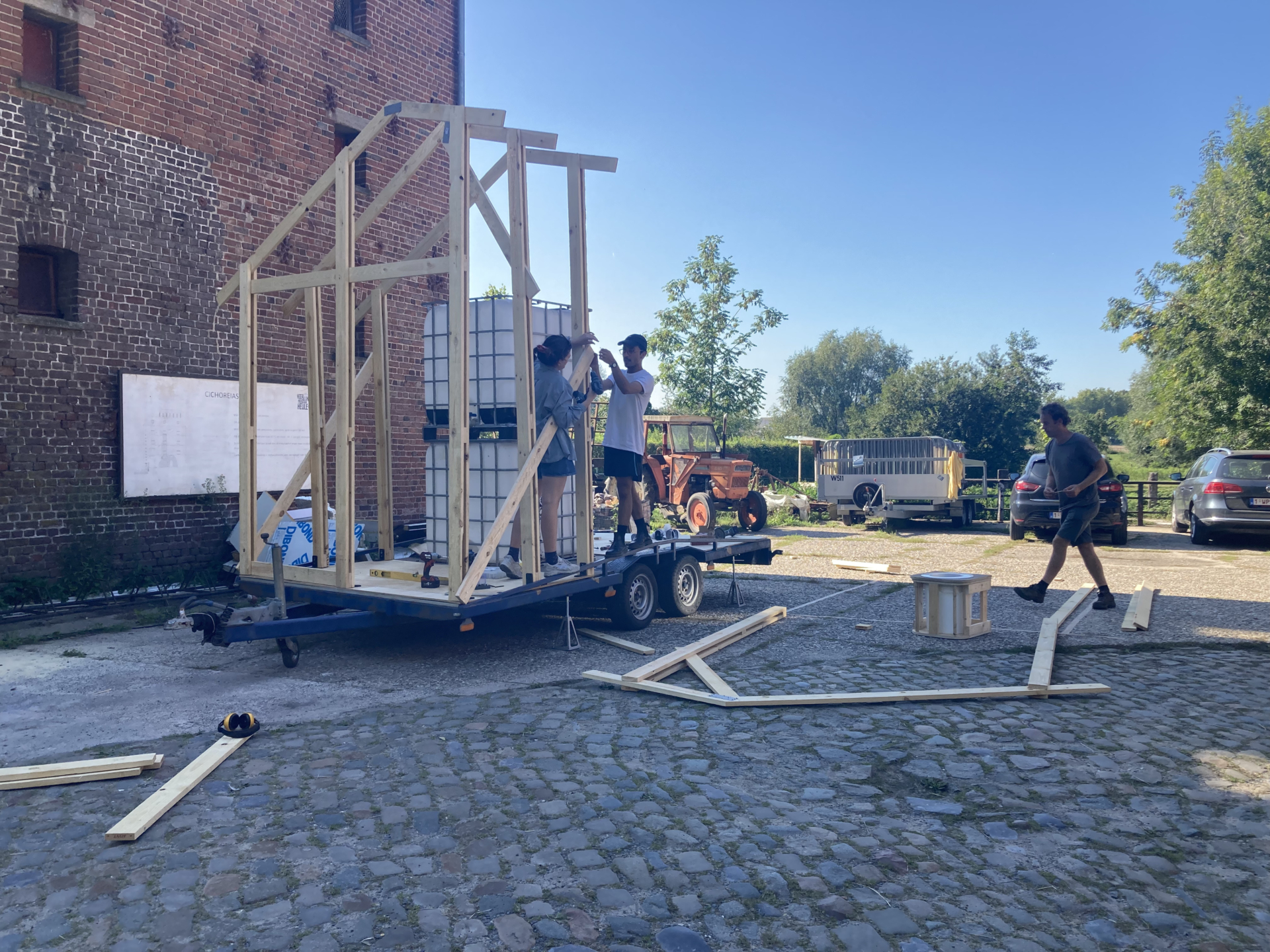
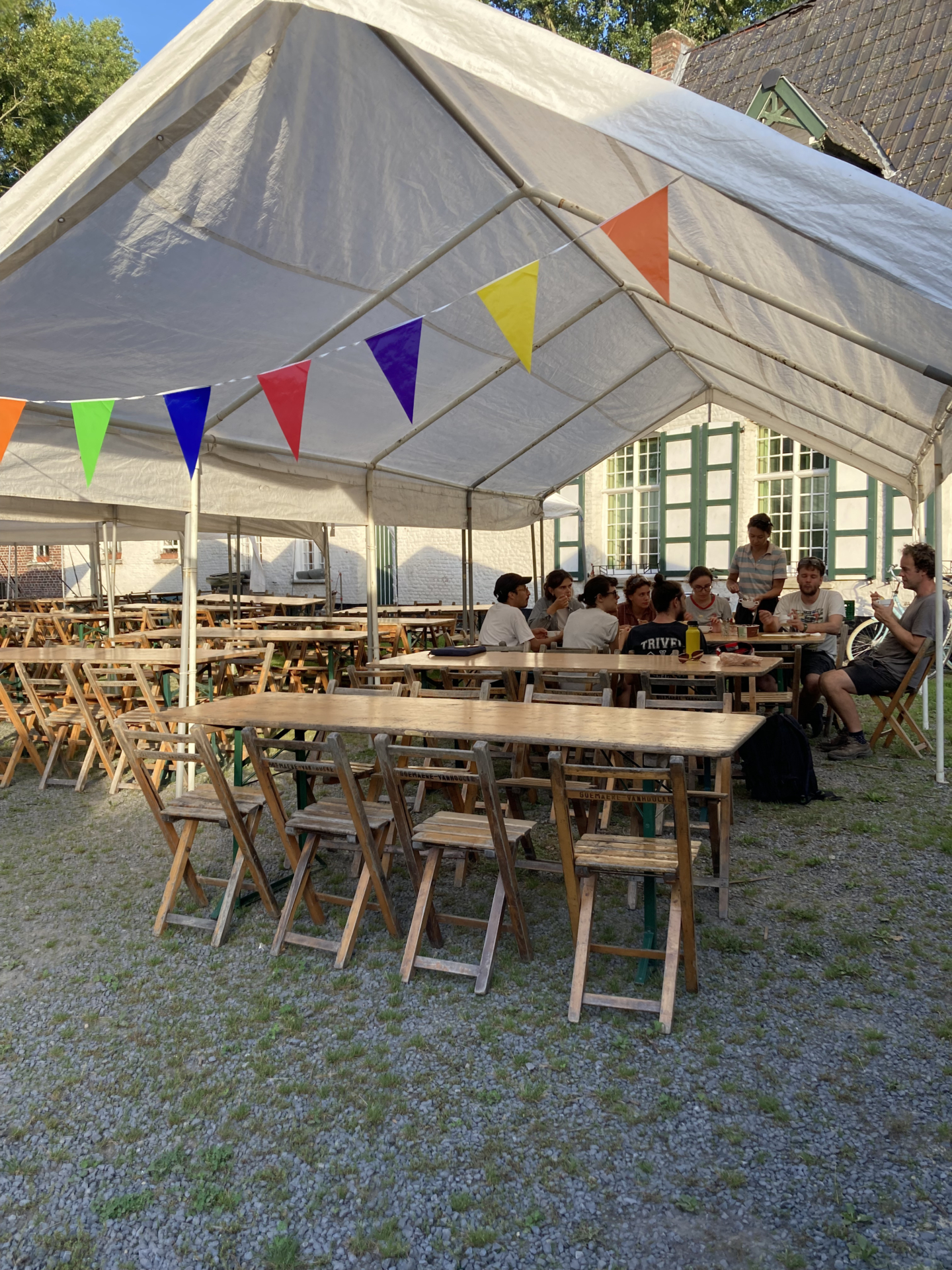
Bolwerk is a cultural freeport that promotes creation, encounter, wonder, and ecology. Situated along the Bossuit–Kortrijk canal in a former cotton production area, Bolwerk is a haven of makeshifts beyond a large wooden gate. In their udge workshop they used to host, people who wants to build or learn to use tools. They also works with local associations who need to design think for their activity.
The city of Roeselare and its youth group, in collaboration with Bolwerk, aim to transform an old caravan into a mobile space for cultural and social activities at the skatepark. This project seeks to enhance the neighborhood by focusing on three key aspects:
1. Safety and Accessibility:** Is the space secure and accessible for everyone?
2. Appeal:** Does it meet the needs and preferences of young people?
3. Empowerment:** Are young people encouraged and allowed to use it?
During 10 days students co-design the caravan, with te Bolwerk team. They learn how to used tools and explore the creativity with available materials.
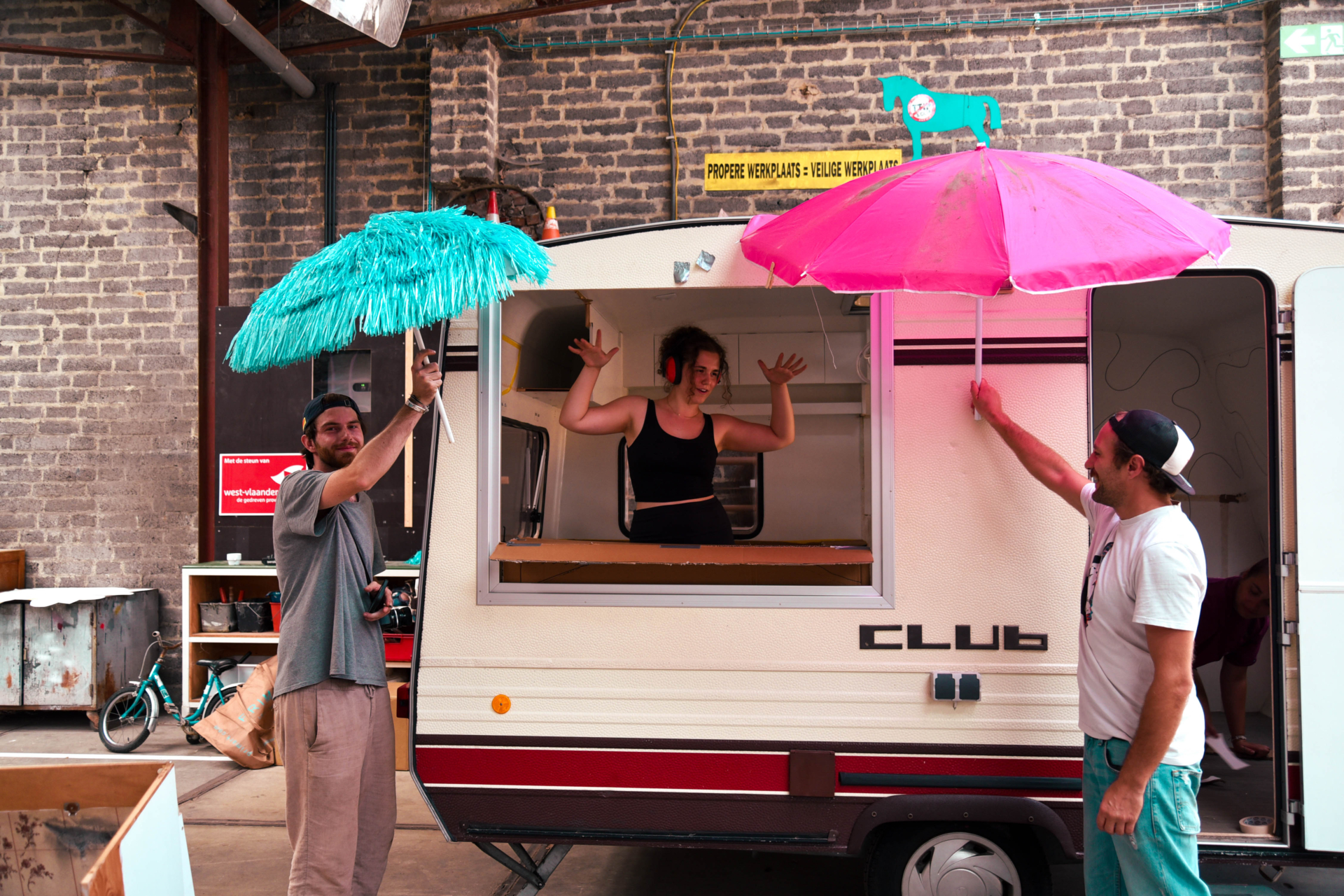


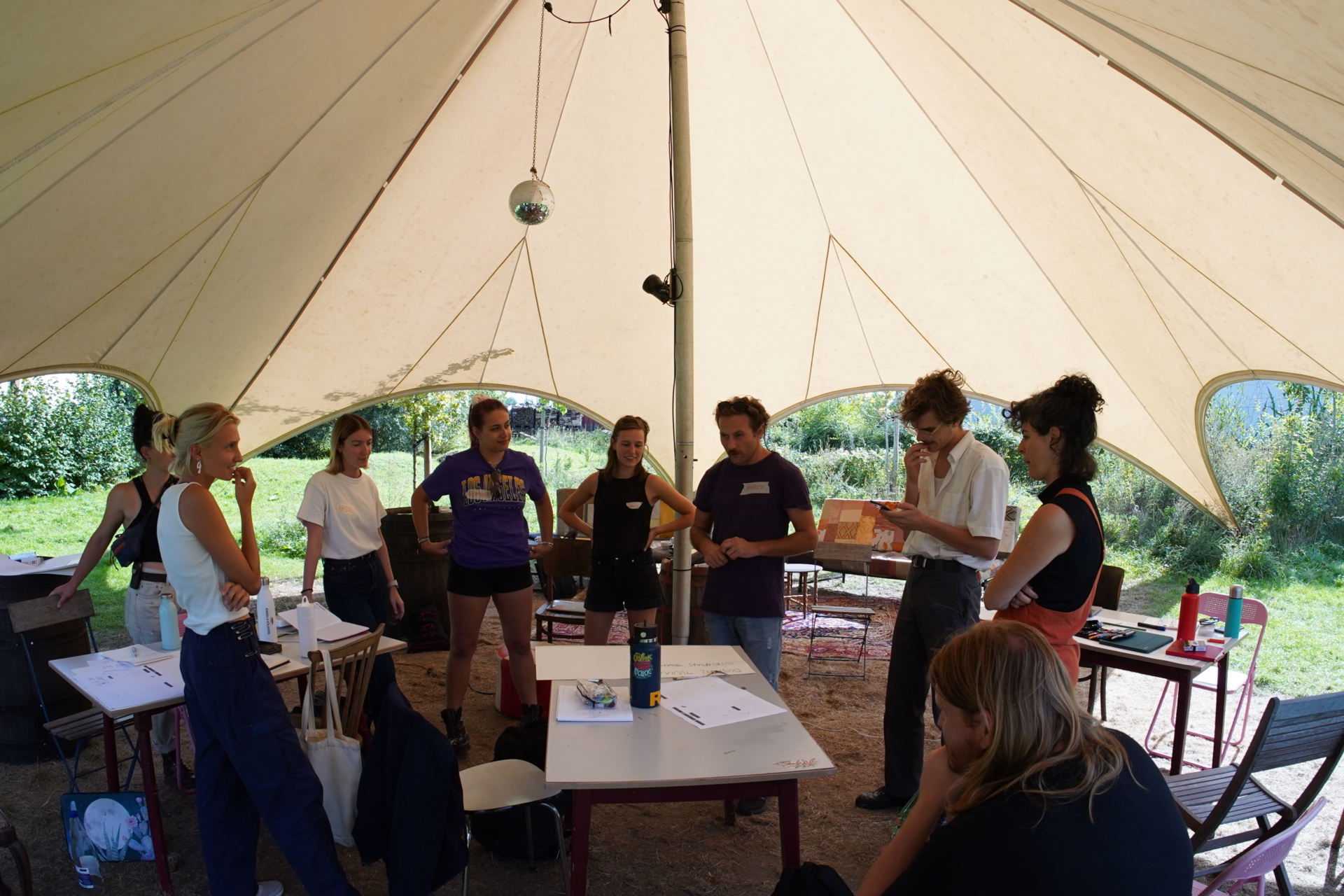

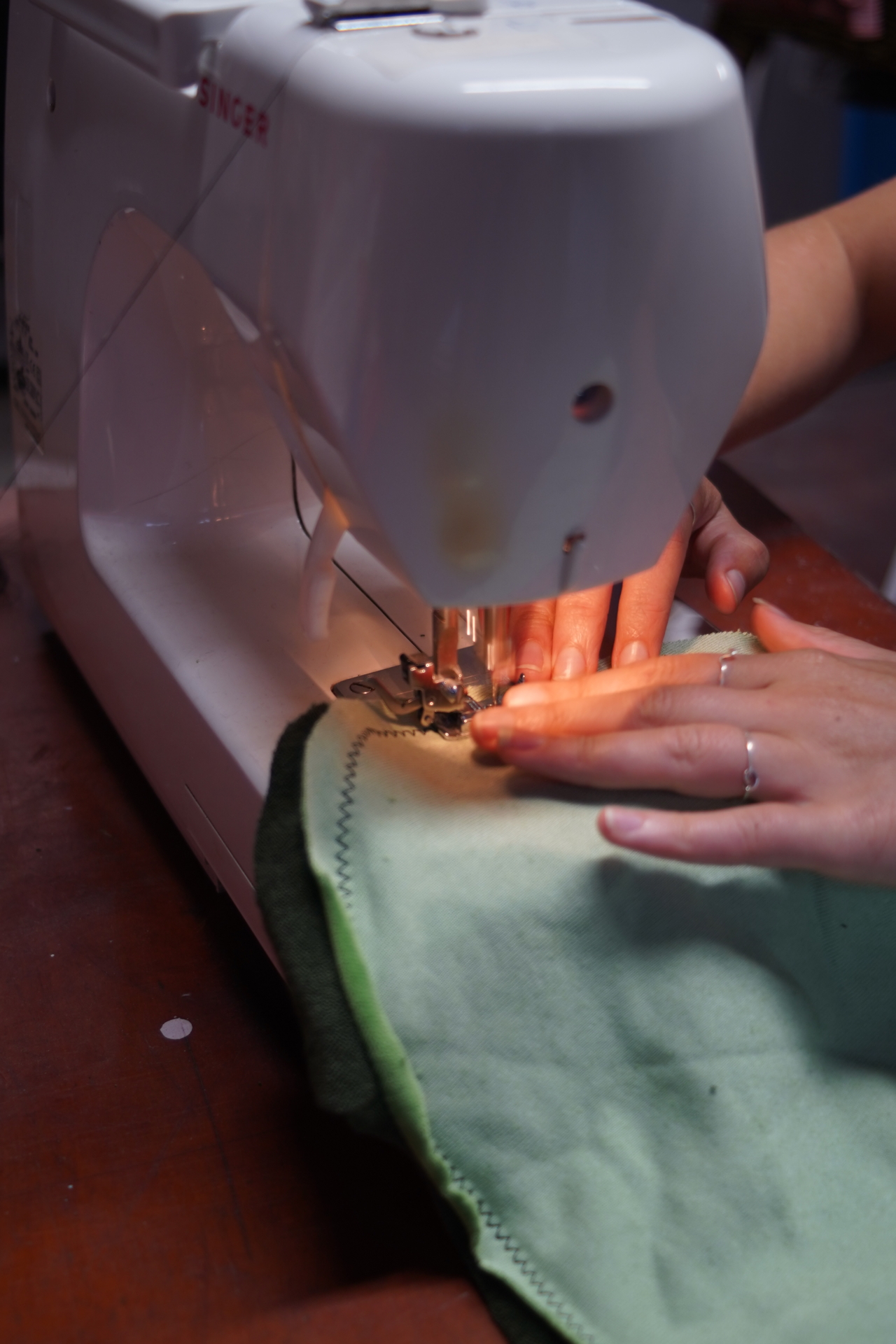
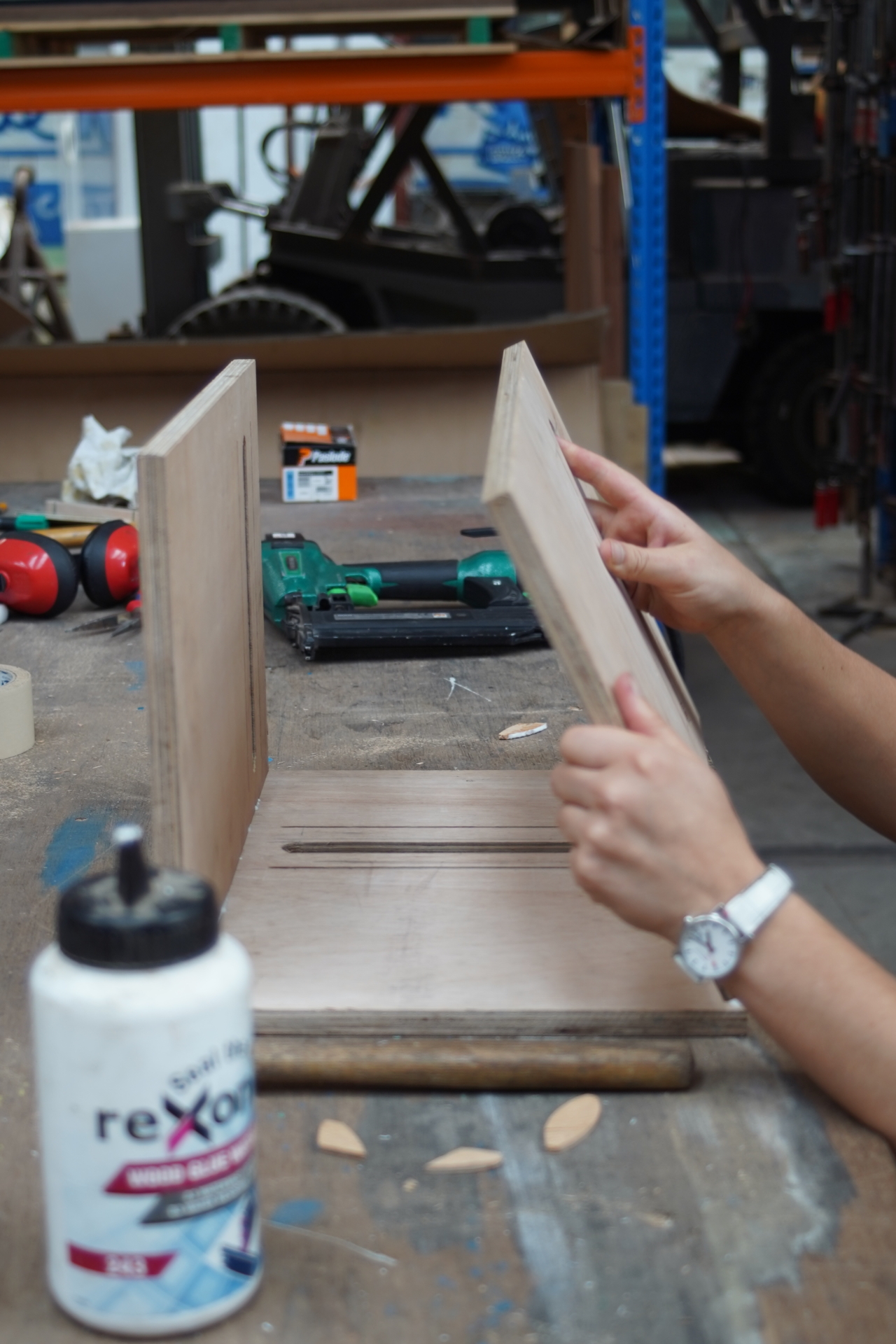

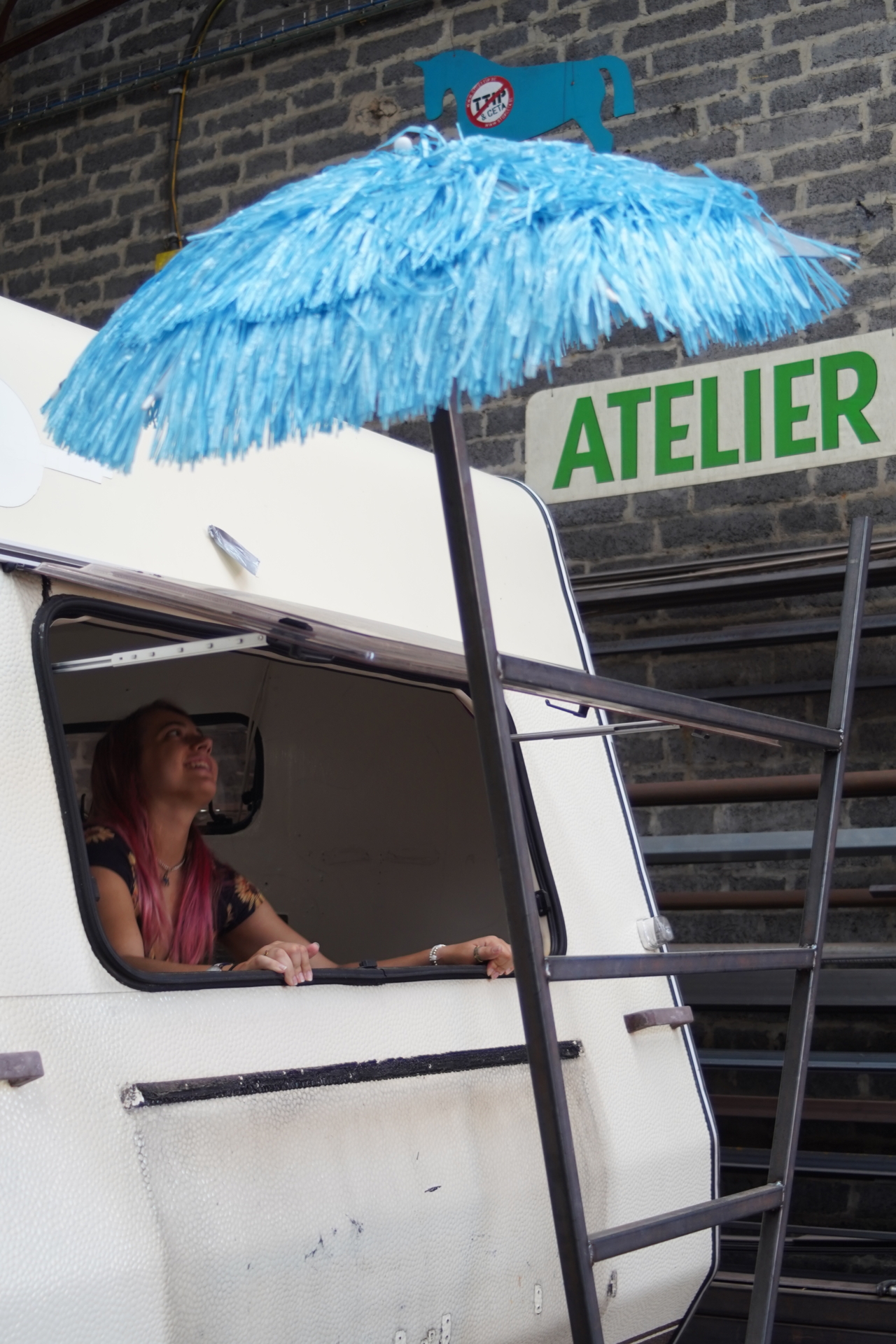

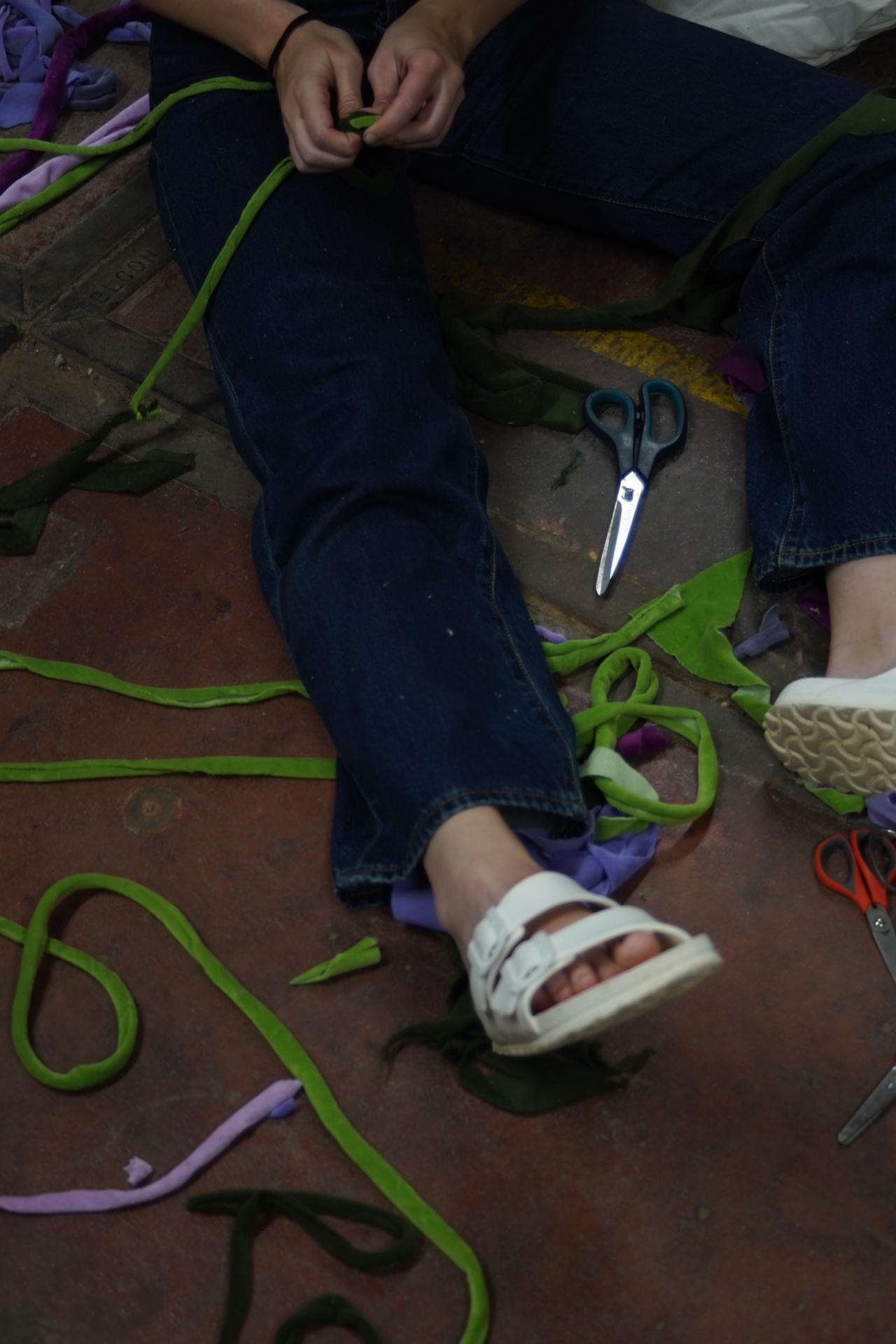
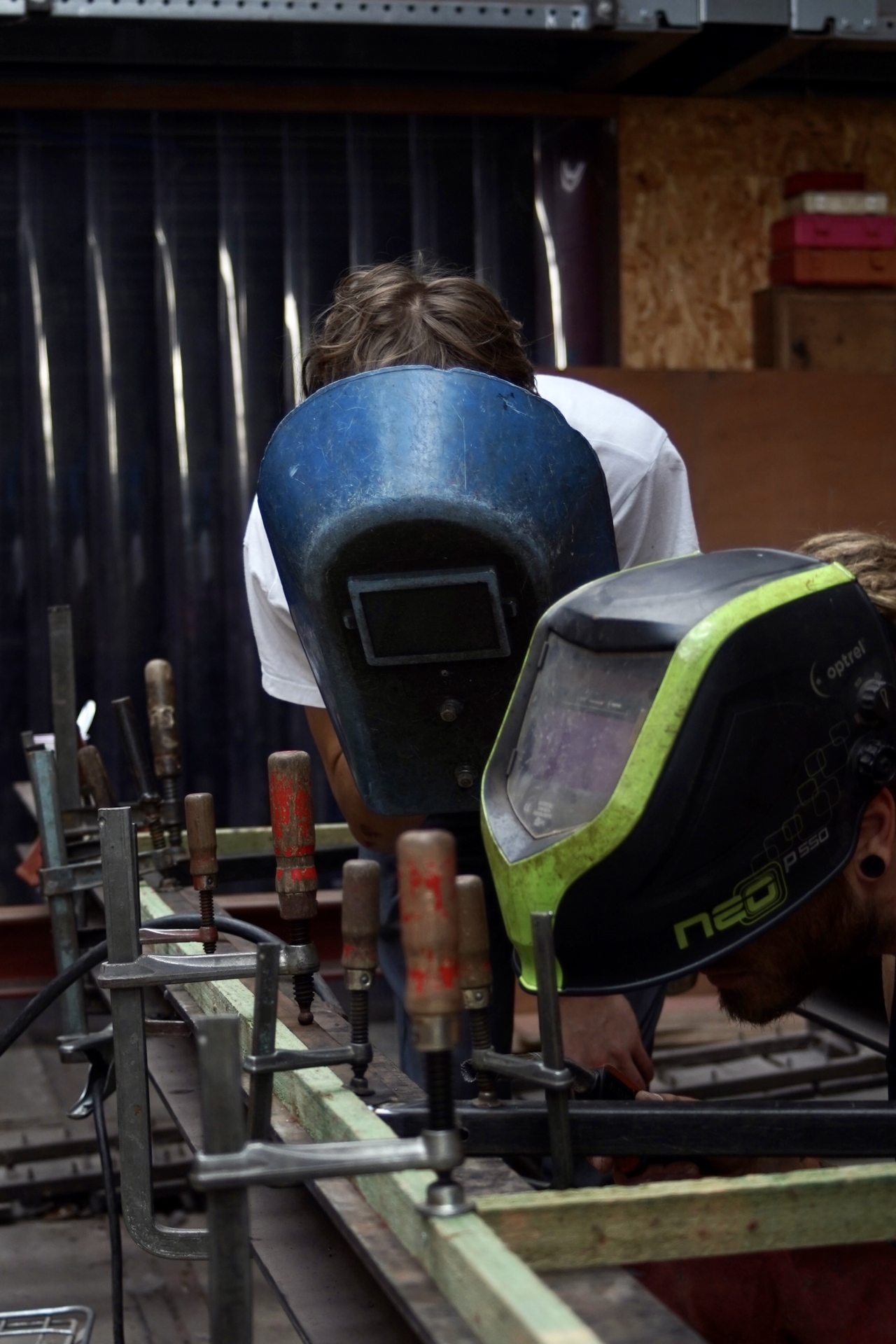
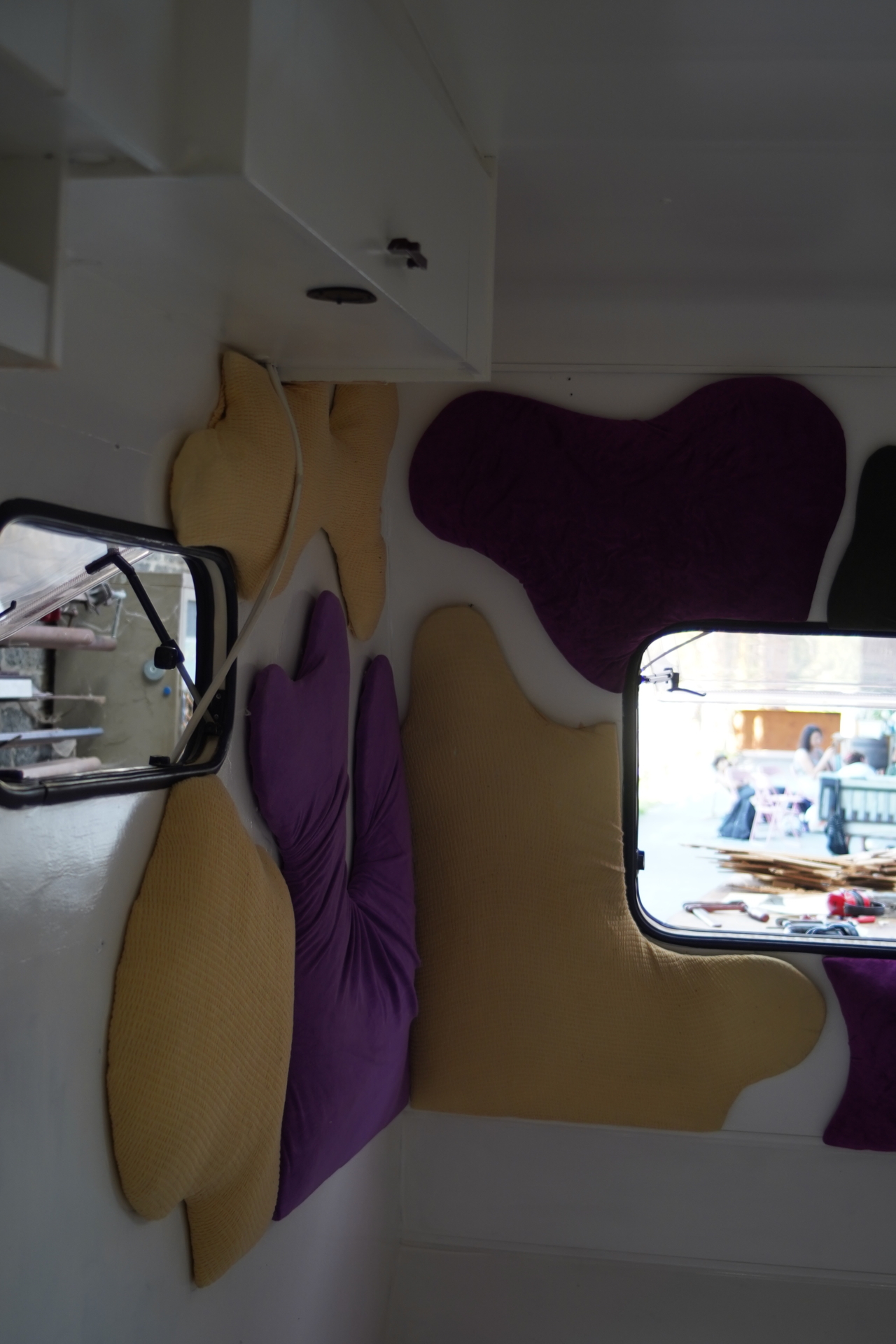
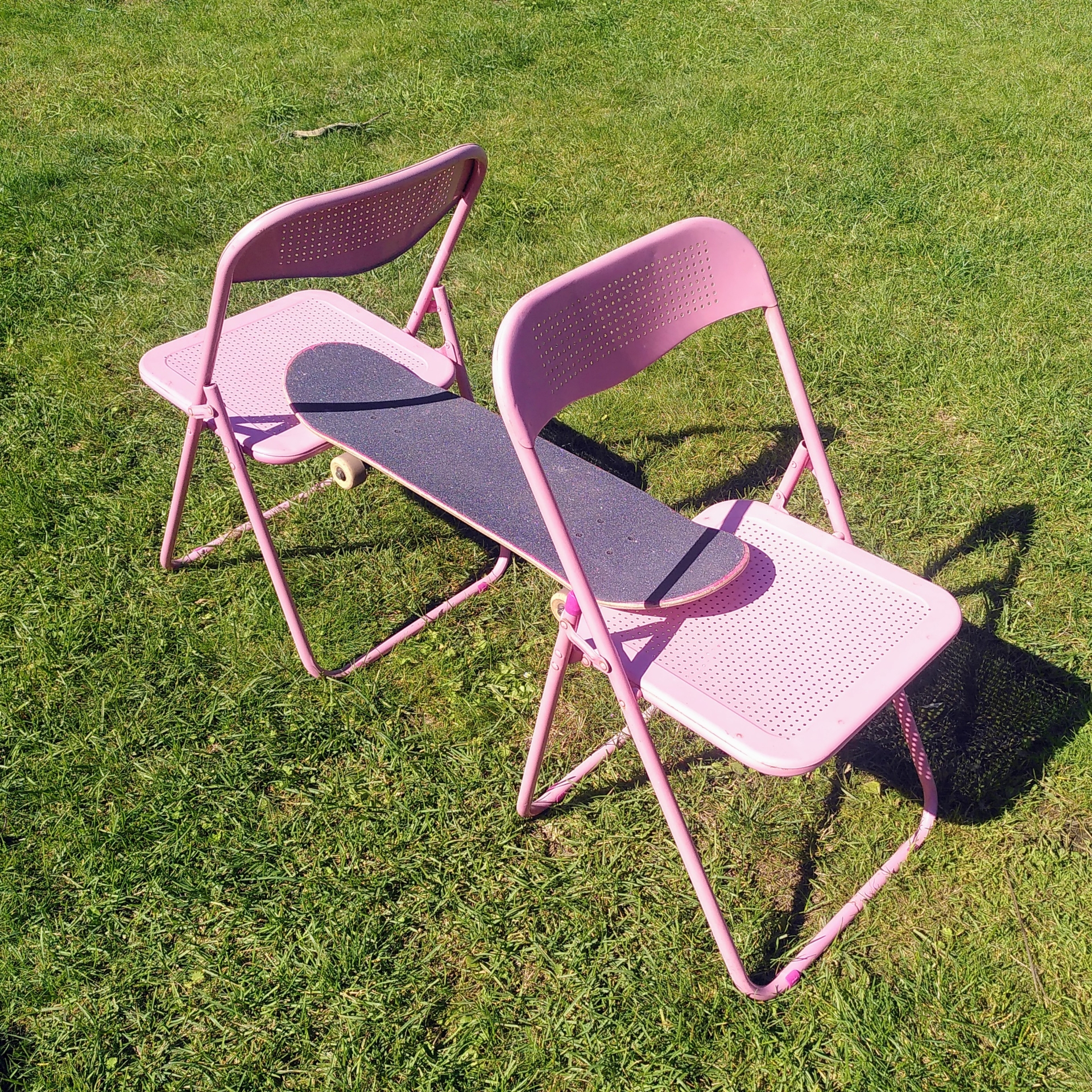
Un grand Merci !
Amelia Shore, Anita Spagnolo, Anna Civalleri, Ariane Caillaud, Arthur Bed, Bernadetta Budzik, Charlette Frémont, Cindy Djahnine, Diego Bonilla, Elise Julie Avet, Elena Falomo, Eric Tron Gianet, Ilaria Casa di Bari, Irene Giardina Papa, Jadd Hallaj, Jelle Marginet, Jonas Bohez, Juliette Cretin, Laura Otalora, Lorena Rode, Lucas Devolder, Marco Cassino, Margot Verbeke, Marika Baruffaldi, Mathilde Bernard, Mila Bétemps, Ninon David, Pjotr Vandierendonck, Robbe Verschure, Romane Nembrini, Ruben Benoit, Servaas Benoit, Stan Van Mierlo, Tristan Isaac.
Pictures by Arthur Bed and Ariane Caillaud


